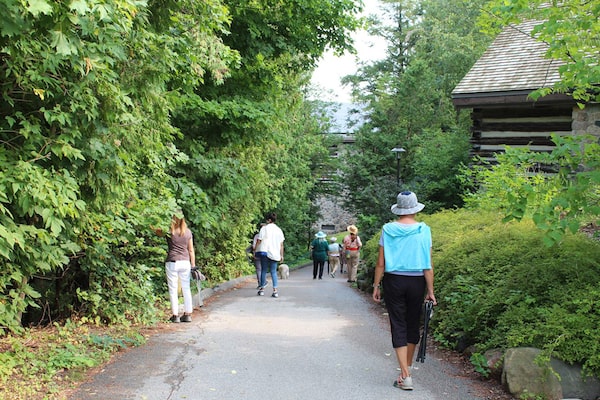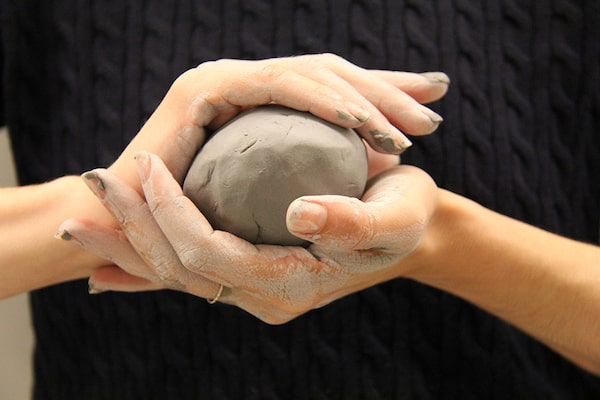
A unique workshop being offered by McMichael is one that combines the restorative power of both art and nature. Participants start with an online art tour, followed by a visit to the museum and then do a meditative group walk on the museum grounds that is based on the Japanese practice of ‘forest bathing’ or spending mindful time in nature.MCMICHAEL CANADIAN ART COLLECTION
Art can excite, it can outrage and, during times of turmoil, it can provide a balm for a troubled soul.
Among those acutely aware of that are the nimble and creative staff members of museums and performing arts centres, which have been slammed by the ongoing global coronavirus pandemic that has tightly restricted how they can welcome patrons.
Virtual museums and workshops have blossomed at such places as Toronto’s Gardiner Museum, the McMichael Canadian Art Collection in Kleinburg, Ont., and the Aga Khan Museum in Toronto, although now they’re also offering art lovers safe, in-person activities as society gradually opens up.
Gardiner art therapist Suzanne Thomson has created online video workshops showing people how to relax. In one, she soothingly explains how to combine breathing exercises with the manipulation of clay to create a pinch pot.
“Clay’s in our DNA,” she explains. “People will say, ‘Oh, but I can’t draw’ but they don’t say ‘I can’t do clay.’ It’s in our nature, as kids making mud pies.”
The tactile experience of working with clay can be a revelation to participants and seeing what they can make with their own hands is rewarding.
“Touch is one of our first senses as human beings,” Thomson says.
“Just the coldness, the weight of the clay can help bring them to the present moment.”
Mindfulness is a key way through which people can learn how to live in the moment and take care of themselves and others, Thomson says.
“It’s amazing how where we are in the moment gets revealed,” says Thomson, who has been at the Gardiner since 2000. “It might be a place that expresses very painfully but here we have an opportunity to be in relationship with that pain, to hold it. But then we can alter it, we can work with it, we can transform it and that’s where art is so liberating.”
The Gardiner is also hosting Free Community Building Weekends until the end of the year to encourage people to explore the museum, try its programs and participate in hands-on activities to experience clay and ceramics in a unique and safe way.
Art therapy has been recognized as a profession since the mid-twentieth century.
“The artmaking process, like meditation, changes your brain waves to more soothing and contemplative ones, so that we can take a wider perspective on our life situations and find relief from stress,” says Helene Burt, the executive director of the Toronto Art Therapy Institute, which offered the first art therapy training programs in Canada in 1968.
“Art therapy can be very effective in dealing with trauma as trauma is experienced in the areas of the brain where feeling and imagery are located. Once we can process trauma experiences on a visual level, we can start to move this material into the frontal lobes where language and reason are located and start to verbalize and rationalize the experience better.”
That can be just as applicable to someone weathering the rigours of the pandemic to more severe cases.
“I think that fear, anxiety and depression can all be externalized into imagery or sculpture or whatever artistic medium one might work with,” she says.
“Externalizing these feelings, rather than just internalizing them, can allow us to see them as separate from ourselves and our identities and then we can start to see how we might decrease, minimize or end the power of these feelings in our lives.”

The Gardiner museum has video workshops showing people how to relax with clay. “Clay’s in our DNA,” says Gardiner art therapist Suzanne Thomson. “People will say, ‘Oh, but I can’t draw’ but they don’t say ‘I can’t do clay.’ It’s in our nature, as kids making mud pies.”GARDINER MUSEUM
She says the working with colour and texture and form is an active process that is energizing, which can help to propel us when we’re fearful or depressed.
The McMichael Canadian Art Collection has taken the innovative approach of uniting the healing power of art with that of nature by adapting its popular Reflections on Light and Shadow: Art and Nature Meditation Outdoor Workshop. It is inspired by the centuries-old Japanese tradition of shinrin-yoku or “forest bathing.”
The calming workshop now begins with an online guided tour of its exhibition A Like Vision: The Group of Seven at 100. That is followed by an in-person visit to the museum the next day. After a 45-minute silent meditation group walk on McMichael’s spectacular grounds in the Humber River Valley, there is a discussion circle and en plein air painting activities.
“It is, of course, about meditating with nature, observing nature,” says Anna Stanisz, director of creative learning and programs at McMichael. "We felt that speaks very nicely to the creative process.
“You have to really start the process by observing the world outside and then concentrate on your connection and your relation to environment, whatever environment you are in. And in art, very often the artists are responding to nature or to colour or to specific elements.”
The Aga Khan Museum is looking to the future with its Rebuild 2020 initiative, which is anchored by the What’s Your Sanctuary? exhibition. That has people sharing original artwork, photos, short videos and poetry to illustrate who or what represented sanctuary to them during the COVID-19 lockdown.
“The works that we received were incredibly varied but incredibly powerful in terms of their meaning,” says Kelly Frances, the museum’s marketing and communications director. Almost 500 submissions came in from around the world.
"Some people submitted photographs of being at home with their families, some people submitted artistic works representing fighting COVID-19. Some people submitted beautiful poetry that represented what it meant to them to be home, to be away from the community, to be away from others.
“It’s a real testament to the significance of what people went through,” Frances says.
The Aga Khan is also reaching out in other ways as well, offering people a chance to express themselves through the Blossom Together Community Tile Wall. Here, people decorate a tile they can get at the Aga Khan or online and leave an optimistic message. The finished work will be included in a mural representing resilience, togetherness and hope.
But the good feelings don’t stop there. All proceeds from the sale of the tile kits will go to the North York Harvest Food Bank.
“It’s really all about creating an opportunity to come together, to contribute their own creative voice, both with What’s Your Sanctuary? and the Blossom Together Community Tile Wall, and really create more hope for the future,” Frances says.
65%
Percentage of Ontario business leaders who say that a thriving arts and culture scene would make it easier to attract top talent to their community.
65%
Percentage of skilled workers who agree a thriving arts and cultural scene is something they would look for when looking to move to a new community.
97%
Percentage of Ontarians who agree that engaging children in the arts is important to their overall development.
SOURCE: ONTARIO ARTS COUNCIL
Advertising feature produced by Globe Content Studio. The Globe’s editorial department was not involved.